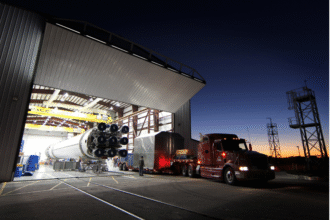1. Introduction
In 2025, the need for a clearly defined digital transformation roadmap has become essential for global enterprises—it’s a global imperative. Businesses across North America, Europe, APAC, and beyond are racing to integrate cloud infrastructure, mobile-first strategies, AI-powered insights, and hyper-efficient operations. Success or failure now hinges less on product and more on technological fitness.
Consider global supply chains adapting to post-pandemic demand surges using predictive AI forecasting. Or banks deploying mobile apps that serve rural customers in Africa. These are not districts; they’re signatures of the coming corporate transformation wave.
This article outlines a comprehensive corporate digital transformation roadmap for 2025, guiding organizations through five pillars: strategy, infrastructure, workforce, data, and experience. Whether you're an enterprise IT lead or C‑suite executive considering to hire consultants, this guide will help you benchmark, plan, and execute transformation initiatives—empowered by frameworks from McKinsey Digital, and platforms from SAP and Oracle.
By tapping into best practices and global trends, your organization can build scalable, efficient, and resilient systems that are optimized for the next decade—and beyond.
2. What’s the Digital Transformation Roadmap for 2025?
What’s the roadmap to transform?
To build a successful digital transformation roadmap, companies must align strategy with technology platforms like SAP and Oracle.A structured, phased approach is essential. Leading advisors like McKinsey Digital outline these five pillars of success:
- Strategy — Redefine business purpose, identify digital goals (e.g., AI automation, subscription models).
- Infrastructure — Build flexible cloud-native infrastructure using AWS, Azure, or GCP.
- Workforce — Empower employees with digital skills and agile mindsets.
- Data — Govern data responsibly and extract insights from real-time analytics.
- Experience — Design customer- and employee-centric digital journeys across touchpoints.
These pillars work together—cloud infrastructure supports AI initiatives; workforce tools enhance data governance; customer experience is strengthened by real-time analytics. McKinsey Digital provides strategic visualizations and diagnostics to assess readiness and outcomes.
3. Key Phases of the Digital Transformation Roadmap
a. Assessment & Strategy Alignment
- Digital maturity audit — analyze gaps in processes, IT, and customer engagement.
- Digital goals — define objectives (e.g., cloud portfolio, mobile enablement, AI-based personalization)
- Success metrics — KPIs like “time to deploy,” app adoption, uptime, and customer satisfaction.
b. Adopting Core Technologies
- Cloud-first infrastructure
- Choose between AWS, Azure, and GCP
- Use containers (Docker, Kubernetes) and IaC (Terraform) to scale
- Mobile enablement
- Build native or PWA apps
- Focus on intuitive UI/UX and offline-first capabilities
- AI & Analytics
- Implement predictive modeling, intelligent automation, and personalization
- Use TensorFlow or Azure ML to analyze customer behavior in real time
c. Digital Operations & Process Reengineering
- ERP & CRM modernization using SAP S/4HANA or Oracle Fusion
- Automate routine workflows like procurement, invoicing, HR tasks
- Enable distributed teams with cloud-native collaboration (Teams, Slack, Zoom)
d. Talent Development & Change Management
- Upskill developers, analysts, and leaders on cloud, AI, agile, DevOps
- Use internal academies, partner with EdTech, or hire consultants for coaching
- Deploy agile ways-of-working with cross-functional “squads” and sprints
e. Data Governance & Cybersecurity
- Define data ownership, lifecycle policies, and regional compliance (GDPR, CCPA)
- Implement encryption, IAM, PAM, and MFA
- Use SAP Cloud Identity or Oracle Identity Cloud for access control
- Continuously monitor for cyber resilience and compliance readiness
4. When to Hire Consultants for Digital Shifts
Hiring consultants is especially effective when aligning business processes across cloud, ERP, and connected ecosystems. Many organizations benefit by following structured transformation playbooks—such as those offered by McKinsey Digital—and building cross-domain strategy maps. See how IoT integration complements these initiatives in our Smart Home IoT Roadmap 2025 article, where edge devices meet enterprise intelligence.
Hiring best practices:
- Define clear scope (e.g., advise on ERP upgrade, build AI center of excellence)
- Vet partners with experience in your region and domain
- Establish outcome-based contracts (e.g., start percentile adoption, cost savings)
5. Navigating McKinsey Digital & Industry Insights
McKinsey Digital offers frameworks, research, and case studies on corporate transformations. Use:
- Digital readiness index tools
- Capability-building maps
- Cloud ROI calculators
- Industry benchmarks for margins and service adoption rates
Their playbooks are particularly helpful for enterprise digital leaders seeking proven adoption paths. Regional offices across the globe provide best-practice insights tailored for North America, Europe, and APAC.
6. Spotlight on SAP and Oracle in Transformation
SAP and Oracle power enterprise-grade transformation with embedded AI, cloud services, and composable application architecture.
🔹 SAP
- Offers S/4HANA® Cloud, SAP Business Technology Platform (BTP), and Intelligent Enterprise frameworks
- Enables real-time insights, predictive planning, modular HR and finance, all in one cloud platform
🔹 Oracle
- Delivers Oracle Fusion Cloud ERP, NetSuite, Integrated Analytics Cloud
- Provides AI-powered automation for finance, supply chain, HR, and CX
Large-scale success stories include:
- A multinational manufacturing firm cutting month-end closing by 60% after adopting SAP S/4HANA and RPA
- A global distributor improving fulfilment lead times by 40% using Oracle logistics cloud and ML
Enterprises should modernize incrementally, starting with one domain, proving ROI, and scaling over 2–3 roadmap phases.
7. Global Digital Transformation Trends in 2025
Emerging trends in 2025:
- Hyperautomation—AI, RPA, and orchestration tools streamline end-to-end processes
- AI-driven CX—Virtual agents and personalization at scale deepen engagement
- Multi-cloud strategies—Balancing Google, AWS, and Azure workloads for resilience
- ESG & digital reporting—Companies must digitally manage and disclose carbon, ethics, and social metrics
- Remote-first tech—Distributed workforce tools and virtual offices become the norm
Trend uptake:
- North America—Early adopters of cloud AI and devops
- Europe—Privacy-first models with data residency mandates
- APAC—Mass mobile-first citizen services and regional tech hubs
8. Conclusion
Following a well-defined digital transformation roadmap helps future-proof operations.By following this structured corporate digital transformation roadmap, enterprises can optimize for agility, resilience, innovation, and employee experience in 2025. Technologies like cloud computing, mobile, and AI are now baseline capabilities.
SAP and Oracle offer robust systems to drive operational excellence. Agencies like McKinsey Digital can help you benchmark and execute. And when you face complexity or need rapid delivery, don't hesitate to hire consultants.
This isn’t just a journey—it’s a necessary shift to stay competitive in the digital decade ahead. Platforms like SAP and Oracle, combined with insights from McKinsey Digital, can steer transformation with clarity. To further explore how digital transformation merges with connected environments, automation, and smart platforms, read our full Smart Home IoT Roadmap 2025.







